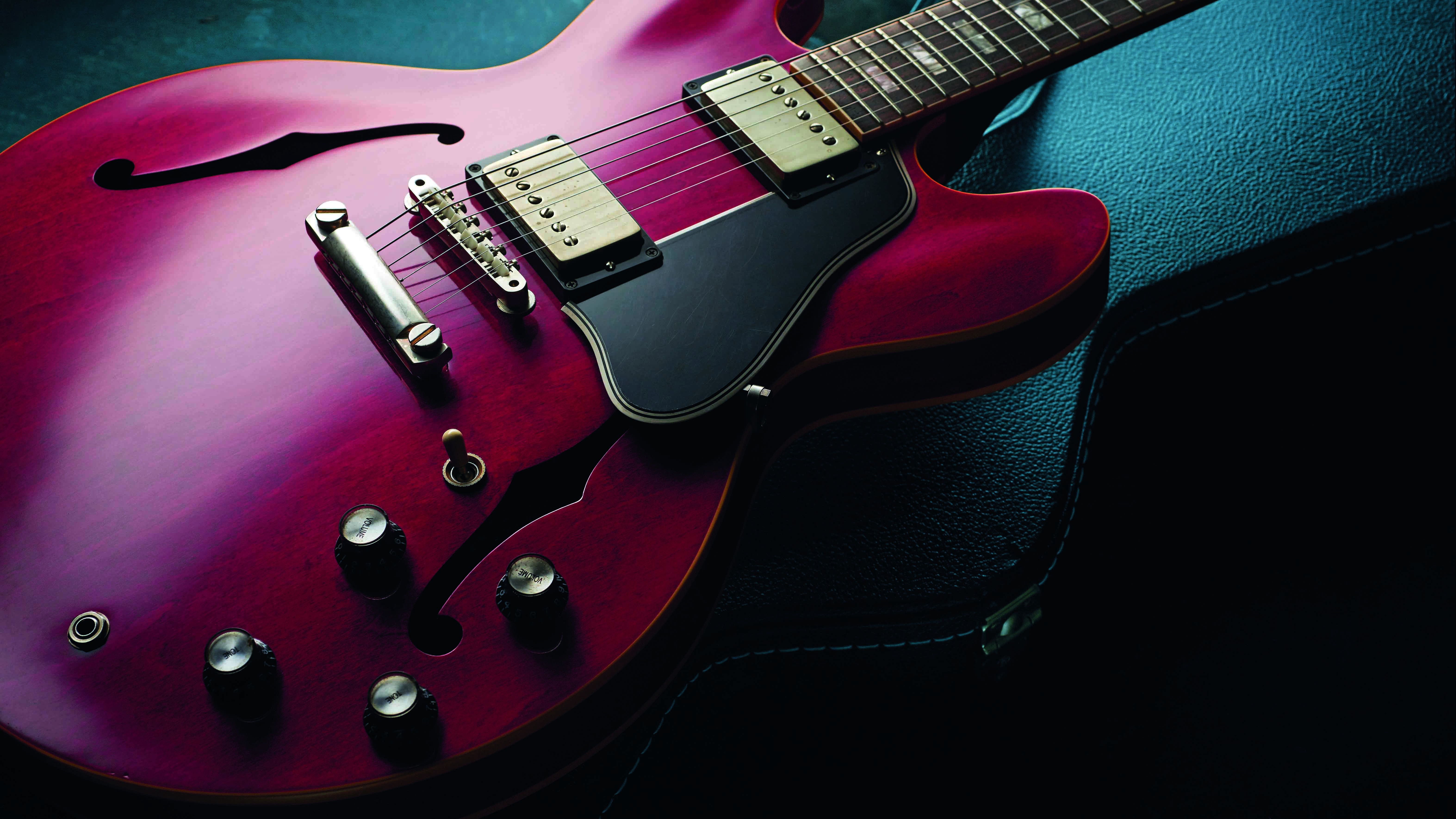
The ES-335 electric guitar defines the idea of a semi-hollow, and since its launch in 1958 it has found favour in the hands of some of the greatest guitarists of all time. Here are some of its finest moments…
1. The Thrill Is Gone - BB King (Live In Cook County Jail, 1971)
Lucille
How blue can you get? The King claimed his guitar has saved his life two or three times, and while there have been many Lucilles along the way, the iconic look and sound of a Gibson ES-355 in the hands of blues’ most lyrical player is one of music’s most enduring sights.
1964’s Live At The Regal gets a lot of love, but on this lesser known recording with a Fender Twin, in front of the Cook County inmates who knew what the blues meant, there’s a brighter spotlight on King’s searing tonal personality.
2. Kid Charlemagne – Larry Carlton, Steely Dan (The Royal Scam, 1976)
1968 Gibson ES-335
This jazz-blues maestro is literally Mr 335, thanks to his 1968 beauty – his “go-to guitar for the last 35 years”, as he told Guitarist in 2007.
Larry played it on hundreds of big sessions in the 70s and 80s, not least the incredible solo here with a Fender Tweed Deluxe amplifier, bridge pickup and with the tone control turned down to about three.
Want all the hottest music and gear news, reviews, deals, features and more, direct to your inbox? Sign up here.
3. Stop Me If You Think You've Heard This One Before – Johnny Marr, The Smiths (Strangeways Here We Come, 1987)
1968 ES-335
Despite his association with the Rickenbacker and Jazzmaster, Marr used an unusual 12-string Gibson 335 on most of his favourite Smiths album, Strangeways Here We Come.
As Marr moved away from layering on the album, he wanted a guitar to add weight. This was one of the songs he wrote and recorded on the 335.
Previously he'd been inspired by another Gibson semi-hollow, a 1959 ES-355 and it's got an interesting story behind it…
4. All Your Love (I Miss Your Loving) – Otis Rush (Live At Montreux, 1986)
ES-335
Another southpaw legend (whose playing style saw him use his 335 left-handed with the strings unaltered and therefore upside down), West Side Chicago innovator Rush influenced many a blues player with his stinging attack and vibrato chord work.
Among them was Eric Clapton, who duets with both his Strat and vocal here on a fantastic live guest appearance.
5. Badge – Eric Clapton, Cream (Goodbye, 1969)
1964 ES-335 TDC
"The second electric guitar I ever bought, says Clapton. "The Kay got me into The Yardbirds, and then when we started making money, I found I had nothing else to spend it on but guitars. Though we weren’t yet in the big-money league, we were making enough for me to buy my first really serious guitar, a cherry red Gibson ES-335, which was the instrument of my dreams, of which the Kay had been but a poor imitation.
Clapton bought a lot of guitars after that, but rarely kept them. "The only one I held on to was the ES-335," he admits in the book Six-String Stories, "it was the oldest guitar in my collection. Well, not the oldest, but the one I had the longest.
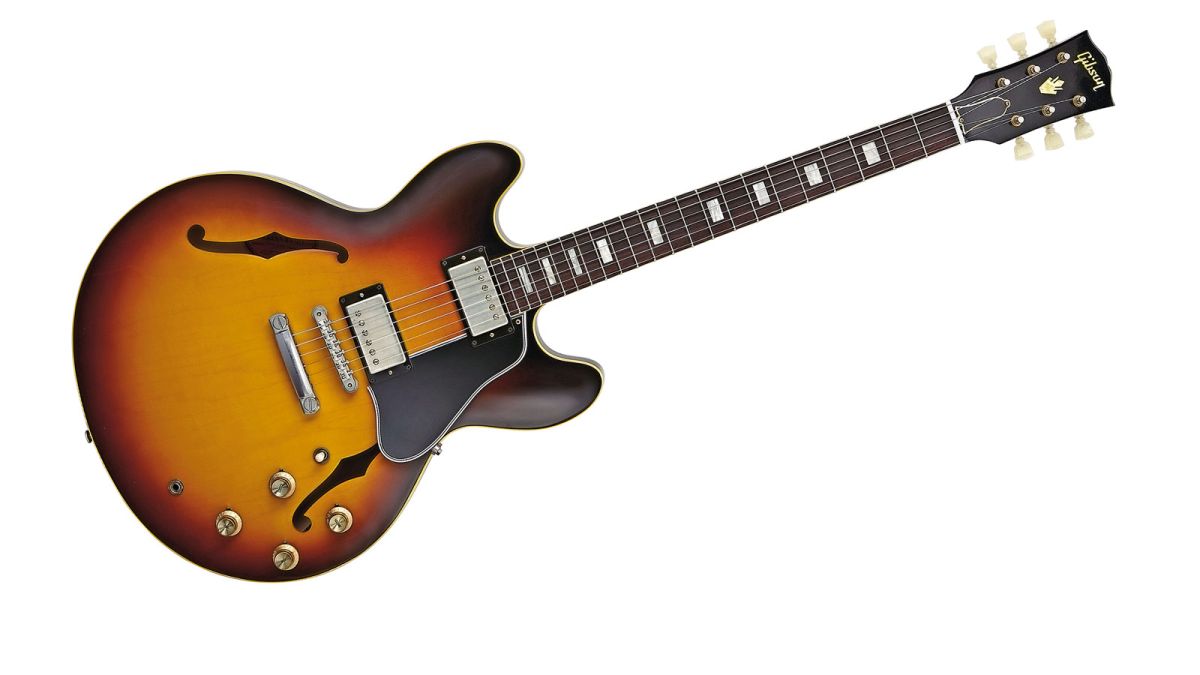
"There are no other tools in my life that have been as long-serving"
"Throughout my life I chose a lot of my guitars because of the other people who played them, and this was like the one Freddie King played.
"The ES-335 is beautiful, and I loved it. It was played regularly over the years. It got on albums, it never really changed. It never got old, it never wore down. It never lost anything. I’d play it now.
"Anything that’s been that long in my life and is still functional – there aren’t too many things that can command that kind of respect. I’ve had no cars that long for instance. There are no other tools in my life that have been as long-serving. After I sold the red ES-335, I bought a sunburst one. It’s a great guitar and it’s so loud. I’d forgotten how loud they were."
It sold at a Christie's auction in 2004 for $847,500 – a world record for a Gibson at auction at the time. It’s very likely that it was the guitar he used on Badge, his collaboration with George Harrison.
The Beatle was of course repaying the debt owed for Clapton’s uncredited solo on While My Guitar Gently Weeps; George plays the rhythm until Clapton takes over for the Leslie speaker-effected arpeggiated bridge and wonderfully concise solo.
6. Hideaway – Freddie King (single, 1960)
1960 Gibson ES-345 TD
Originally playing a Goldtop Les Paul but switching to a 1960 ES-345 TD that would become his signature guitar, Texas Cannonball Freddie used a plastic thumbpick and metal fingerpick to create some of the greatest blues instrumentals of all time.
Still underrated to this day, his inimitable, highly melodic style influenced a whole generation of players, both at home and across the Atlantic.
Child In Time – Ritchie Blackmore, Deep Purple (In Rock, 1970)
1961 ES-335
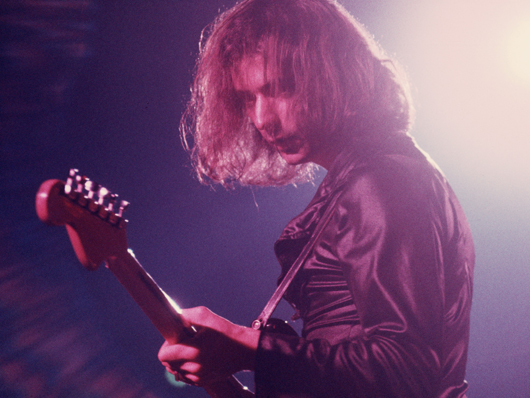
5 songs guitarists need to hear by… Ritchie Blackmore (that aren't Smoke On The Water)
Blackmore used his 335 throughout Purple’s first three albums, but this is its last studio appearance before he heard Jimi Hendrix, and the Stratocaster became his main squeeze.
He makes it count, though, on a stunning virtuoso solo that builds in speed, moving from neck to bridge pickup. It’s likely the guitar on this track was amplified through a Vox AC30.
8. Anthem – Alex Lifeson, Rush (Fly By Night, 1975)
1968 Gibson ES-335 TD
Lifeson with a Gibson semi-hollow guitar symbolises an entire era for Rush fans; whether it's a 335 or the Alpine White 355 that became even more iconic.
He bought a 335 on the band's first tour, adding a Les Paul later. Along with the custom white 355 TD he got in 1976 they would become his main guitars until the later '70s, covering a truly classic era of progressive music.
“I was using a Gibson ES-335 then," recalls Lifeson of his gear for the Fly By Night album, "and I had a Fender Twin and a Marshall 50-watt with a single 4x12 cabinet. An Echoplex was my only effect.
In time he worked with Gibson on a hybrid Les Paul / ES mix; the Gibson Lifeson ES-Les Paul.
9. I'm Going Home – Alvin Lee, Ten Years After (Live At Woodstock, 1969)
1959 Gibson ES-335
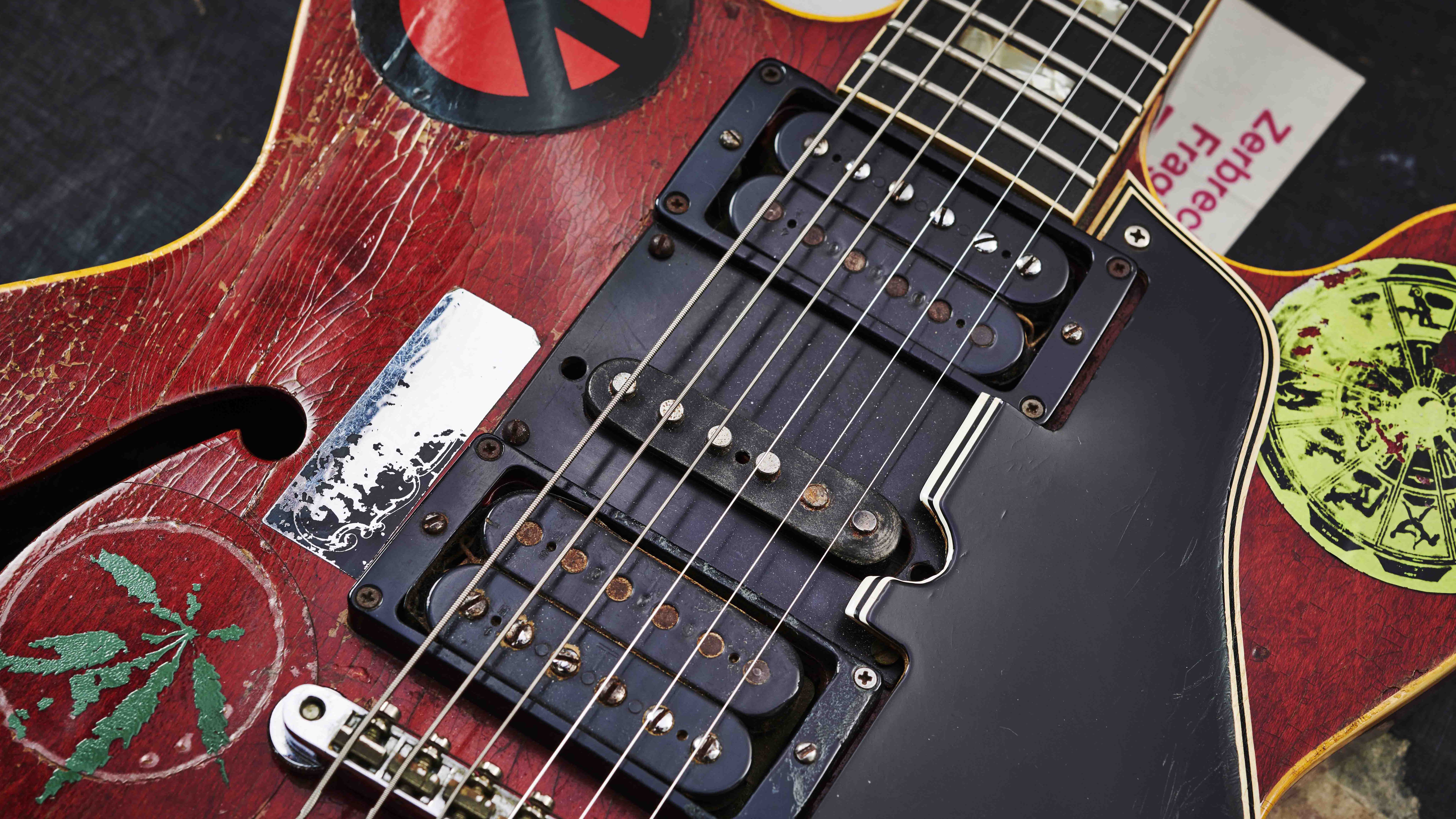
The late, great Alvin Lee could do truly impressive things with the used and abused, sticker-covered 335 he named Big Red, and the solo here is one of them – its adrenaline blues bristles with energy.
Alvin’s model sported a fast 60s-profile neck with block inlays (after the dot original’s headstock snapped off) and an added single-coil pickup in the centre position.
10. The Wild Ones – Bernard Butler, Suede (Dog Man Star, 1994)
1961 Gibson ES-355
In the lineage of great British indie guitarists, Butler was the most obvious heir apparent to Marr in the early 90s, balancing inventive and anthemic parts while driving songs on Suede's first album with kinetic tones. But while that album saw a 1980 Les Paul Heritage take centre stage, the follow-up was a semi-inspired affair.
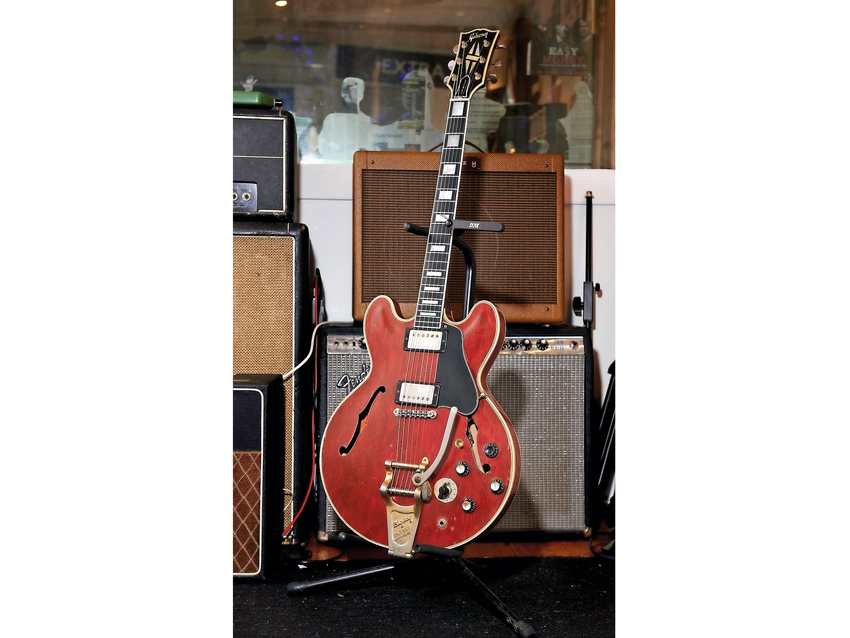
And like Marr he wasn't afraid of colouring his parts with the Bigsby tremolo. Here he balances the dynamics majestically as The Wild Ones builds from acoustic strums to chiming lead / rhythm hybrid work from Butler.
"I bought this at Guitar Center in Los Angeles for $4,500," Butler told us in 2014, "the most I have spent on a guitar. The inspiration of getting a red ES-355 was Johnny Marr, but also Chuck Berry and Roy Orbison. My dad loved Roy Orbison, so big red semis are a childhood memory. From an early age, I thought: that’s an electric guitar."
Guitarist is the longest established UK guitar magazine, offering gear reviews, artist interviews, techniques lessons and loads more, in print, on tablet and on smartphones
Digital: http://bit.ly/GuitaristiOS
If you love guitars, you'll love Guitarist. Find us in print, on Newsstand for iPad, iPhone and other digital readers
